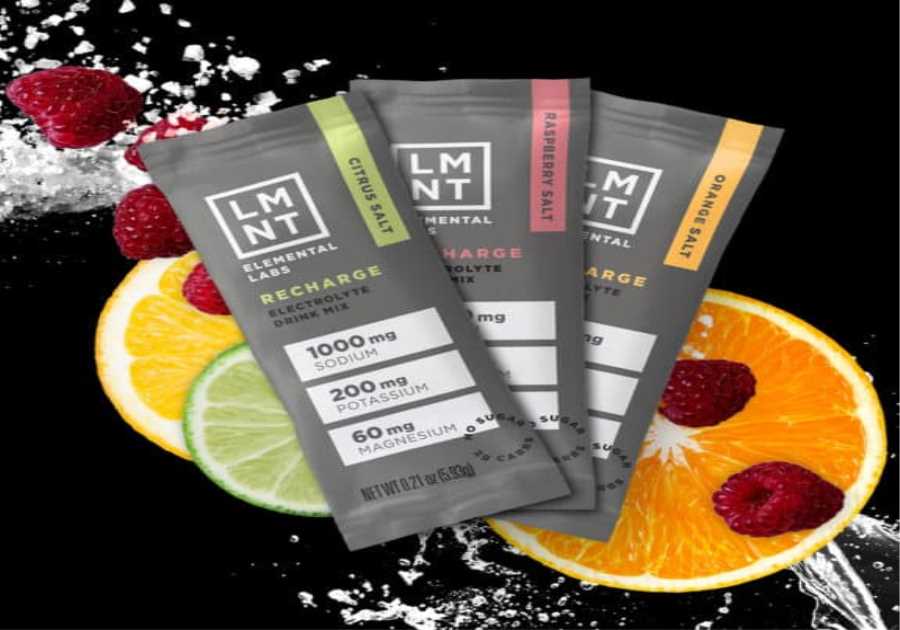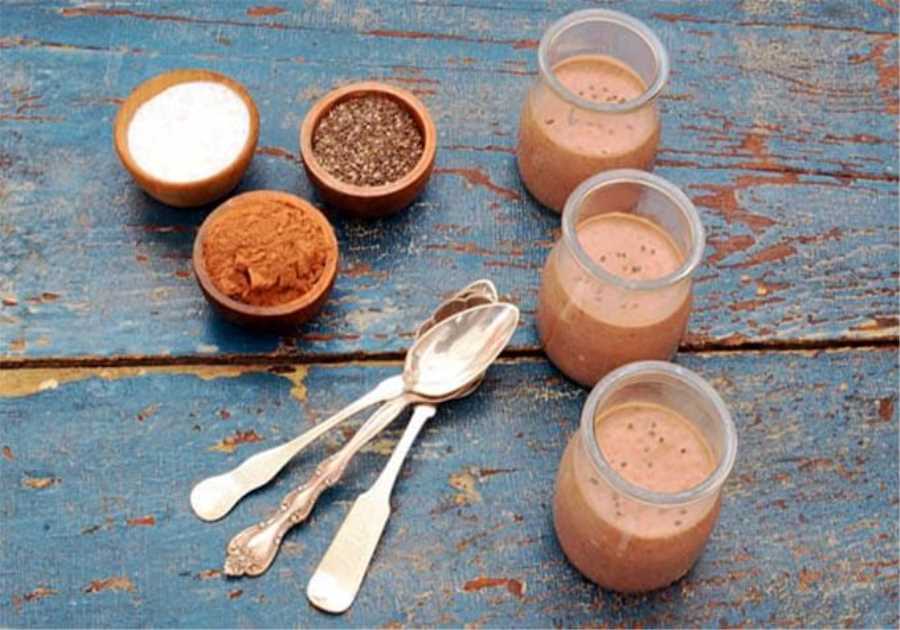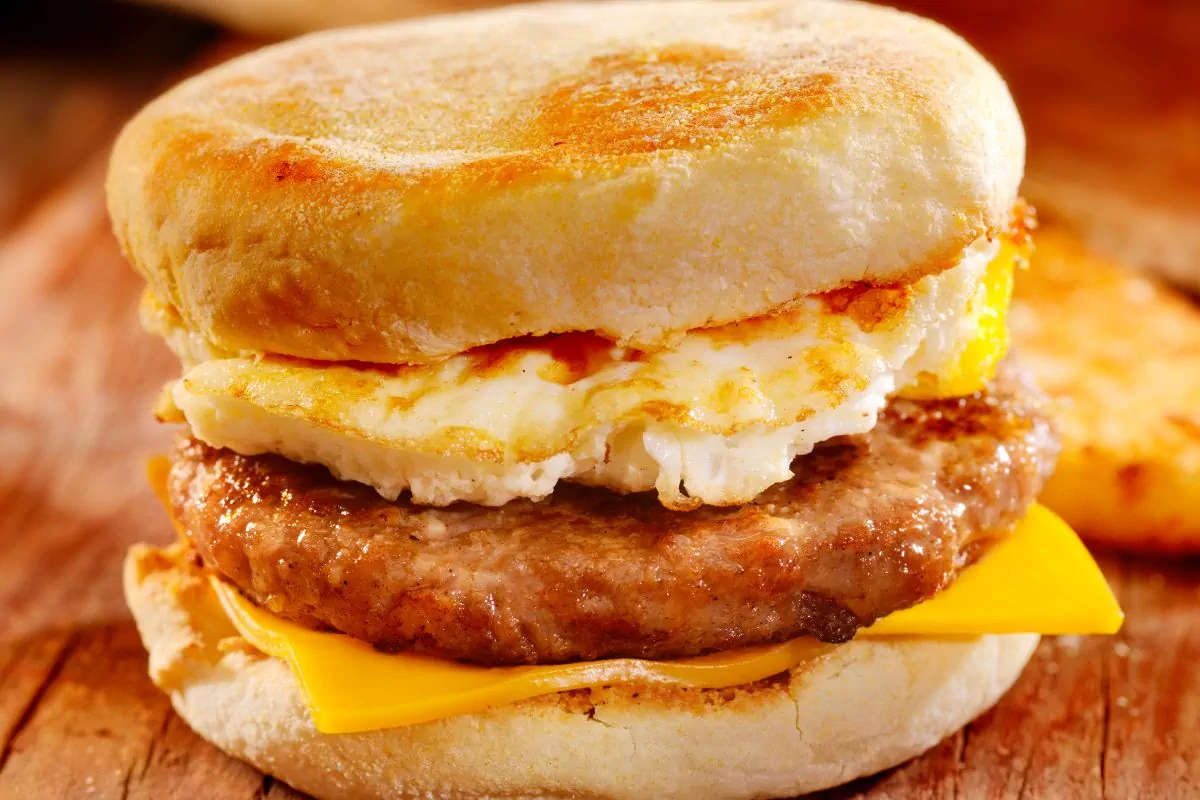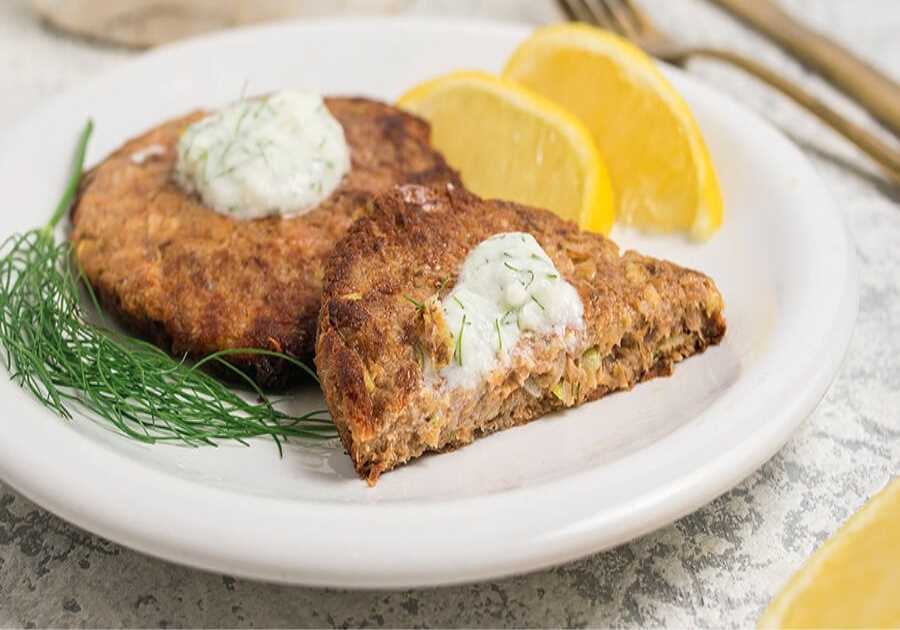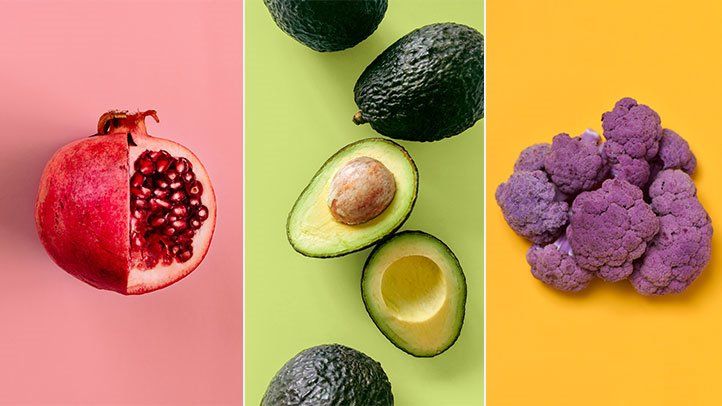
How to successfully Reduce Inflammation on the Paleo Diet
Paleo may be a prime prescription for optimal well-being, yet many fail to unlock its full anti-inflammatory potential. Smart strategizing is key to unlocking the power of this diet and easing inflammation.
First, let's set the foundation. Eat various veggies, including cruciferous and leafy greens—grass-fed meats and wild-caught fish—and you’ll get plenty of omega-3s. Prioritize organic produce whenever possible to minimize exposure to toxins that aggravate inflammation.
Seek out healthy fats like coconut oil, ghee, avocado, and olives which are sources of monounsaturated fatty acids and medium-chain triglycerides. Include ground flaxseed meal and hemp hearts for their omegas 3s and lignan content, which may help reduce inflammation.
Be mindful in sourcing foods; limiting pro-inflammatory food additives is essential for fighting inflammation. Avoiding processed foods is important here: Skip items made with vegetable oils (such as corn or soybean oil) as these increase production of inflammatory molecules in the body.
Herbs have powerful anti-inflammatory properties, too, so incorporate ginger, turmeric, or other bioactive ingredients into daily meals or snacks for the greatest benefit. Replacing sugary treats like fruit juices or sodas with herbal teas can be an easy start toward reducing chronic inflammation.
Ultimately, implementing this approach allows us to reap all paleo has to offer healing from within by choosing foods as medicine over pharmaceuticals where possible—and optimizing long-term resilience to disease!
Green beans
Green beans are an excellent addition to a Paleo diet. They contain many essential vitamins, minerals, and micronutrients. However, they also contain a few negative elements. You need to be aware of their presence so you can avoid unnecessary harm to your body.
One of the most important components of green beans is vitamin C. This vitamin is vital for collagen production and boosting the immune system. It is also an antioxidant.
The other nutrient that you will find in green beans is potassium. Potassium is a building block for electrolytes. And it helps prevent the build up of fat deposits in the arteries, a major cause of heart disease and stroke.
Omega-3 fatty acids
Omega-3 fatty acids are essential nutrients for your body. They provide benefits for your heart, eyes, and immune system. In addition, they have been shown to help reduce inflammation. Ensuring your diet has a balanced mix of these healthy fats is important.
Some sources of omega-3 fatty acids are cold-water fatty fish, such as salmon, tuna, and anchovies. You can also find some in other foods, such as algae. Certain types of fatty fish, such as black cod, contain more omega-3s than others.
Stress
The Paleo diet is no doubt a fad amongst a certain demographic, but it is not without its merits. As with any dietary regime, it is best to err on caution. Some of the benefits of the paleo diet include weight loss and increased energy levels. In addition to shedding pounds, the paleo gizmo is a good way to combat the ever-growing overeating problem. It also helps you avoid the dreaded blood glucose spikes often accompanying a high-fat diet.
To keep your gut happy, eat whole grains. Not only are they an excellent source of fiber, they are also rich in B vitamins and magnesium. So, it's no wonder the paleo diet has become popular among the nation's most health-conscious.
Inadequate sleep
Sleep quality can have big time effects on your physical, mental, and even cognitive health. Getting a good night's sleep is a proven way to ward off chronic medical conditions. Sleeping too little can increase the risk of coronary heart disease in women. A sleep-deprived body is an unfriendly place to be. This is why you should take the time to read up on the subject. You might find out you aren't the only one.
It's no wonder a recent study revealed that a whopping 70 percent of Americans have sleep problems. Sleep deprivation has also been linked to various ailments, including cardiovascular disease and obesity.
Poor nutrition
Poor nutrition and inflammation are problems that can lead to a wide range of health conditions, including diabetes, cancer, and arthritis. It is essential to eat a variety of wholesome foods to ensure you get enough vitamins and minerals. Including fruits and vegetables can also help with this.
The "Mediterranean" diet has been linked to lower levels of oxidative stress and inflammatory response. This diet emphasizes vegetables and fruit, and low-fat dairy products. In recent years, Paleo advocates have become more welcoming to adding grass-fed meat and non-grain spirits like tequila.
The transition from sugar-burner to fat-burner
A transition from sugar-burner to fat-burner on the Paleo diet can be accomplished with some forward thinking. While it may be hard to give up your sugary treats, you'll find that you'll be rewarded with more energy, a slimmer waistline, and a healthier you.
The transition from sugar-burner to fat-burner can happen in just a few days. After five to six days on a low-carb diet, your body will have a fat-burning effect. An energy spike will accompany this. As you become more fat-adapted, you can go longer between meals.
Frequently Asked Questions
Paleo: Is there any cheese allowed?
Cheese temptations can sometimes be too tempting to resist if you aren't paying attention. But is it allowed on Paleo? Here's what to know. While there is no rule that says cheese should be allowed, Paleolithic people did not eat cheese because of its dairy-rich content.
A small amount of high-quality cheese might be acceptable if you are unable to avoid dairy. It all depends upon your individual dietary requirements and preferences, as well as how you respond to certain food items.
Some people are extremely lactose intolerant, and they should avoid dairy products. Others can tolerate moderate amounts of sheep's or goat's milk byproducts, provided they aren't allergic to lactose.
Many vegan options, such as almond cheese or coconut cheese, are available to those who prefer to eat less dairy and enjoy cheese. It's possible to have some cheesey goodness in your diet while still following a vegan lifestyle.
What happens during the first week of the paleo diet?
Paleo doesn't have be hard. The first week is all about getting used to the new diet and lifestyle changes you are about to make.
It's essential to detoxify your body and prepare it for deeper dietary changes that will follow to achieve maximum results with the paleo diet.
Try to avoid processed foods and artificial substances wherever possible. Focus on vegetables and high-fiber fruits and veggies, and eliminate added sugars.
Ensure adequate hydration throughout the day and restful sleep at night for your body to detoxify efficiently.
Your body might experience withdrawal symptoms, such as decreased energy or headaches. These symptoms are normal but you should seek medical attention if they become severe.
Include physical activity in your daily routines. For example, you can walk briskly each morning and evening or join a class such as yoga or aerobics. This will improve digestion, aid in weight loss, and help maintain overall health and well being.
You can also take this time to consider food intolerances and food sensitivities. For a deeper understanding of nutrition, you can try new foods such as kale and quinoa.
How fast can I lose weight with paleo?
Without knowing about your eating habits and history, it is difficult to predict how fast you'll lose weight. However, generally speaking, a Paleo-style diet is high in protein, fibre, and healthy fat, which helps to provide greater satiety between meals and can help reduce overall calorie intake. This can help you reach your ideal body weight and keep it there. In addition, eliminating processed grains and other refined carbohydrates leads to improved blood glucose control, which can further contribute to effective weight loss efforts. A meaningful weight loss program must include regular exercise. The paleo diet can help you make lasting changes to your body composition if you adhere to the core principles.
In addition to a healthy diet and regular exercise, it is important to ensure that you are getting adequate rest and managing stress levels. Lack of sleep can lead to an increase in appetite and cravings for unhealthy food, and high levels stress can cause cortisol levels, which can lead to weight gain. Therefore, it is important to ensure that your lifestyle habits align with your weight loss goals.
Can you gain weight on a paleo diet?
The key to success is being consistent in your approach and taking action. It is important to carefully consider your diet and lifestyle. Then, you can tweak it to achieve long-term nutritional harmony and lasting results. Understanding the principles of paleo is essential to help you determine whether or not it is suitable for you.
You may find that a paleo diet is able to help you achieve your fitness goals, depending on how strict and what foods you choose from each group. For those who want to lose weight, this approach requires the same coaching as for losing weight.
Realistic results can be achieved when you make practical meals that meet your caloric and physical activity needs.
If need be, consider increasing portion sizes accordingly by adding more fatty items like nuts or higher-carb vegetable sides such as sweet potato; doing so in moderation should help promote periodic gains in size without imparting too many processed ingredients like refined sugars or flours into the diet regimen.
A balanced paleo lifestyle will bring optimal health to everyone, regardless of their goal for weight loss or muscle building. Make sure that you are focusing on nutrition. That way everyone can achieve the results they desire while sticking to their diet plan.
Who shouldn't try the Paleo Diet
Paleo Diet shouldn't be used by anyone looking for a quick fix. This diet is not designed to make drastic lifestyle changes quickly. It's about long-term lifestyle changes. Some people who focus on weight loss may not see results in a few months.
The Paleo Diet also isn't ideal for anyone with any kind of dietary restrictions or food allergies--particularly gluten avoidance, as some grains aren't appropriate choices. Paleolithic recipes can cause people with high protein needs to feel overwhelmed.
People who change diets all the time will not be successful. Sticking to a consistent routine is the best way to stay on track, even if this means changing some ingredients. It is important to be committed to the Paleo Diet. Those who jump from one diet to another should consider switching.
This lifestyle is not for everyone.
What are the best fruits to eat Paleo style?
Fabulous! You are ready to embark on a nutritional and wellness journey. The Paleo diet can be a great place for you to start. Eating Paleo means adapting your diet to the foods available during pre-agricultural periods, like lean meats, seafood, fruit, vegetables, nuts, and seeds.
This way of eating helps reduce inflammation. You can also have delicious, whole foods that are rich in nutrients to improve your health.
Because fruits provide vitamins and minerals such as Vitamin C in oranges and strawberries and manganese (in bananas), they are an integral part of Paleo. Other fruits include papaya, papaya and mangoes. They all contain the antioxidants your body requires to perform at its best.
You can make smoothies with different fruits, or create sweet treats from dates and other dried fruits.
Ensuring you get enough nutrient-dense fruit can help keep cravings at bay while infusing your body with an arsenal of powerful antioxidants that keep it functioning optimally. Fruits are a great source of energy and don't weigh you down. You can even combine them with meals throughout your day!
How can you make the Paleo Diet suit your lifestyle?
Paleo is about more than just eating well. Paleo is about changing your life, from nutrition and fitness to relationships, work, and mental health. It requires dedication and commitment to make sure it fits in your busy schedule.
When making the transition to a paleo diet, it is crucial to know what foods are allowed and which can be replaced. Many people find that shopping and meal prepping become a big part of their weekly routine. If you are following strict paleo, each detail matters. So make sure to check every item before you place it in the shopping cart.
For those on-the-go lifestyles, it makes sense to find consistent ways to make eating healthy easier while supplementing with snacks or meals prepared ahead of time. You might be tempted to order takeout if you are trying to increase your nutrition intake. However, there are many restaurants that offer low-carb or gluten free options and even accessorized meals. You can have a great night out with creativity and premeditation without having to compromise your goals.
Don't let it overwhelm you, although planning will help ensure that you stay on track with the paleo diet and allow you to integrate some yummy gourmet dishes into your daily routine! You should prioritize nutrient-dense items over processed foods. This will ensure that you are energized throughout your day by allowing for Paleo-approved treats!
Statistics
- Eaton and Konner, for example, wrote a 1988 book, The Paleolithic Prescription with Marjorie Shostak, and it described a diet that is 65% plant-based. (en.wikipedia.org)
- (9) These are just some reasons they're nixed from a paleo diet plan, according to a popular paleo diet website. (everydayhealth.com)
- One study cited in the article, published in the European Journal of Clinical Nutrition, found that calcium intake levels among followers of the paleo diet were as low as 50 percent of the recommended daily value. (everydayhealth.com)
- You can throw these into any delicious paleo recipe (or make up your own) and be 100% sure that you're paleo diet compliant :). (ultimatepaleoguide.com)
- It's up to you to decide to what extent you want to follow those guidelines, but if you follow them 100%, you can be assured that you are eating the best food for your body and greatly investing in your long-term health and well-being. (paleoleap.com)
External Links
academic.oup.com
- Paleolithic nutrition and metabolic syndrome: systematic review, meta-analysis
- The American Journal of Clinical Nutrition
link.springer.com
- The influence of Paleolithic nutrition on chronic diseases: systematic review & meta-analysis - Nutrition Journal
- Popular Weight Loss Strategy: A Review Four Weight Loss Techniques. Current Gastroenterology Reports
nature.com
paleoleap.com
How To
How do I incorporate exercise into a paleo diet?
For optimal health, it is important to strike the right balance between nutrition and exercise. It can be difficult to find the right balance, especially if you have a restricted diet. Paleo can be difficult because it excludes certain food groups such as grains, dairy, legumes, and so on.
The good news? It's not as difficult as you might think to incorporate exercise into your paleo lifestyle. Start by thinking about ways you can get more movement into your day. This could include taking a 10-minute stroll after lunch or dinner, or standing up at regular intervals for those who sit for long periods.
Another option is high-intensity intertraining (HIIT). This involves switching between intense activity and short rest breaks. This workout lasts less than 20 minutes and doubles up for strength training. It targets all major muscle groups efficiently and quickly. The HIIT exercises such as burpees and jumping jacks can be done by beginners or more experienced trainers.
Don't be afraid of mixing up traditional endurance activities like running, cycling, and swimming. These activities can help burn calories and provide mental health benefits, such as stress relief and increased endorphin levels (talk about multitasking!). All in all, these are great tactics for incorporating exercise into a paleo diet alongside nourishing your body with wholesome food choices!

